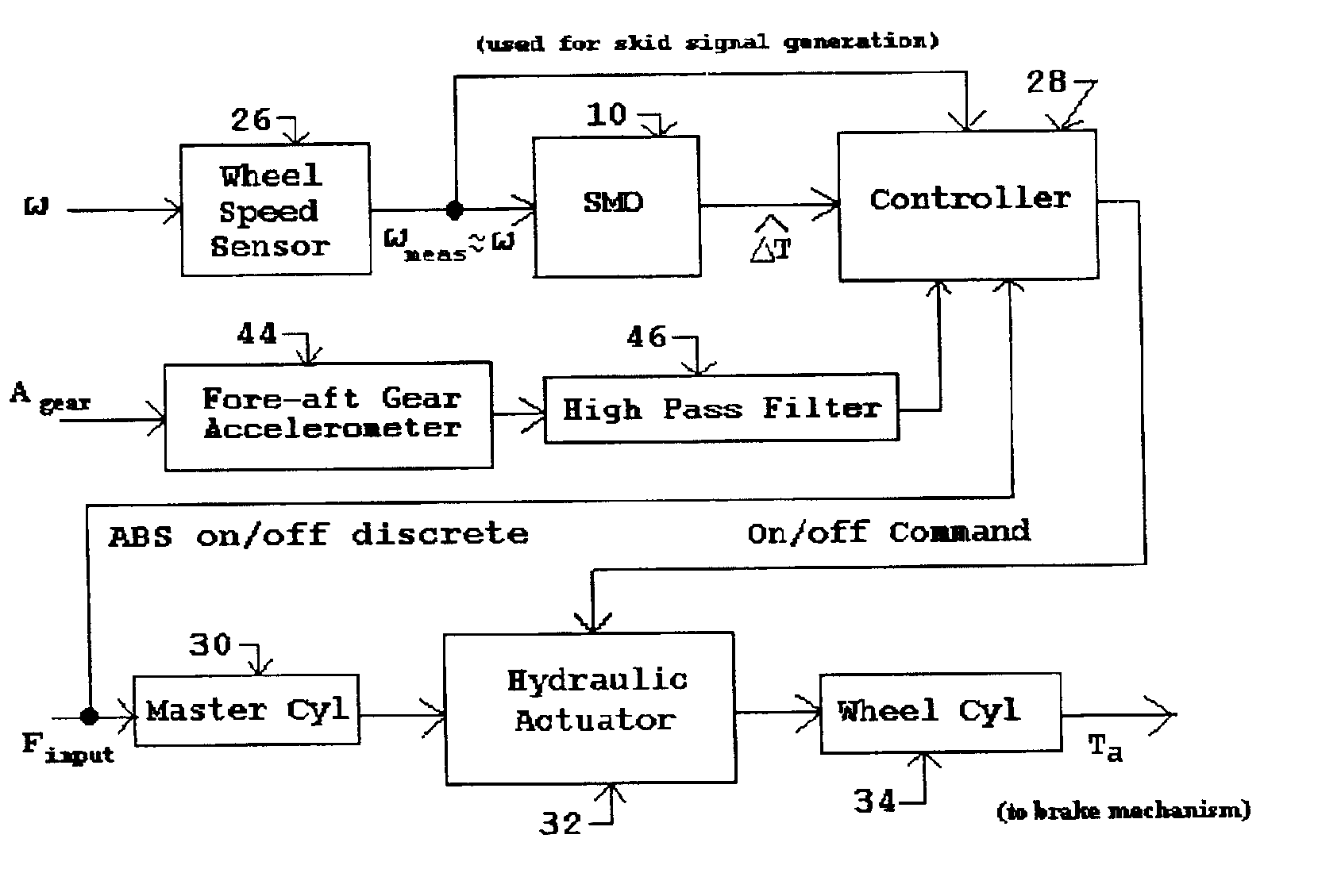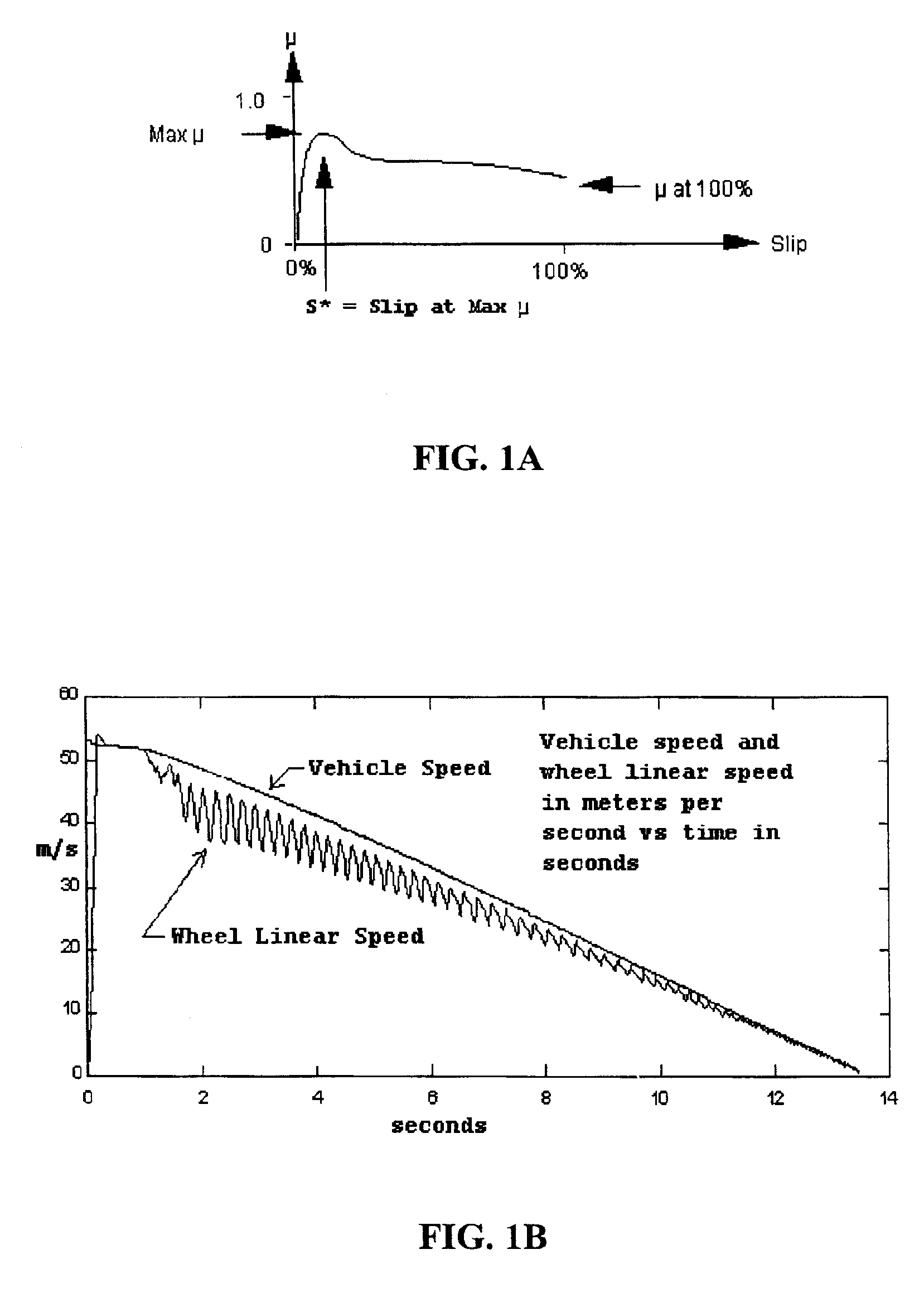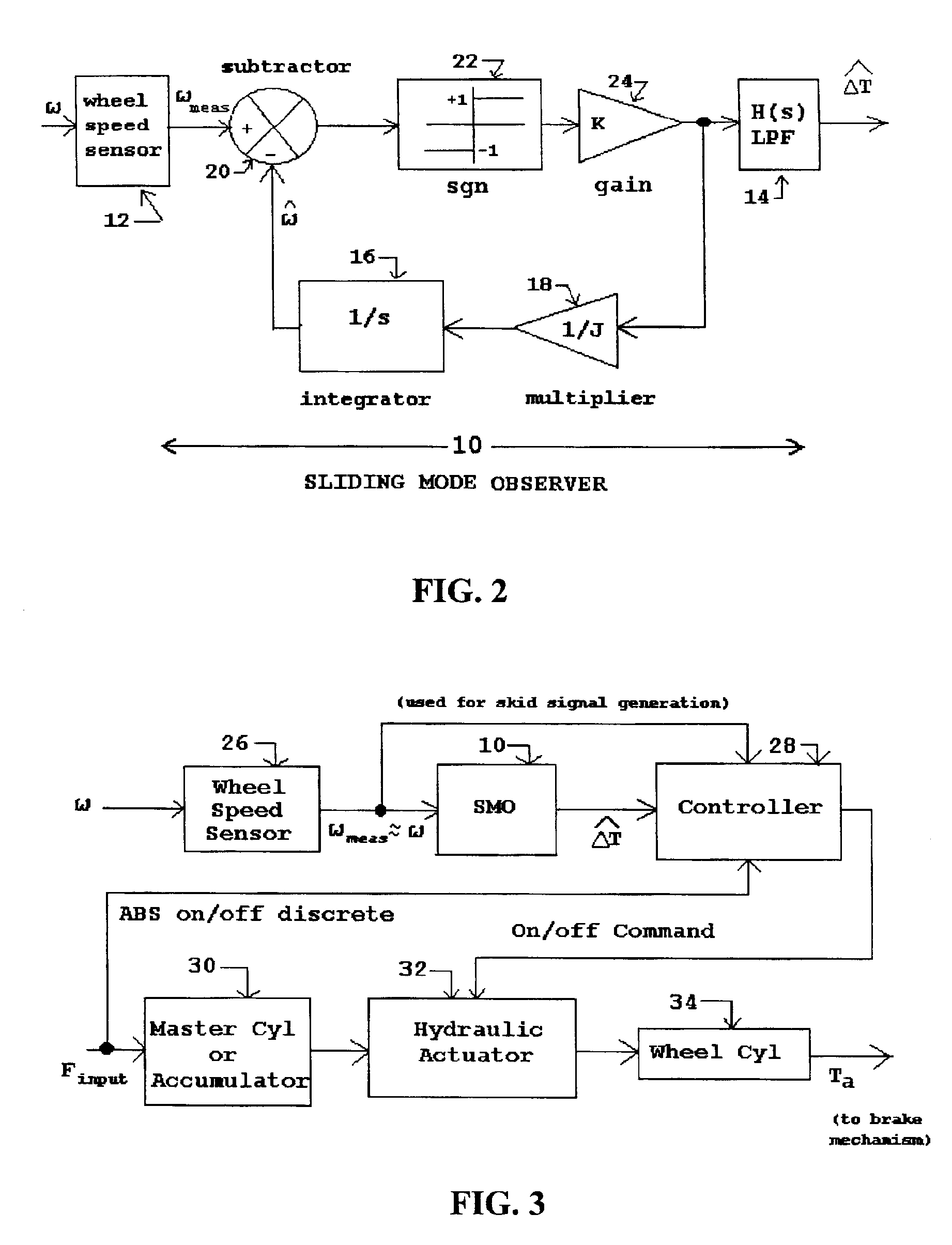Antilock brake systems employing a sliding mode observer based estimation of differential wheel torque
a differential wheel and antilocking technology, applied in the field of antilocking brake systems, can solve the problems of limiting the ability of the '951 patent method to function properly in real-time braking situations, the angular speed of the nose wheel is only a very noisy measurement of the true aircraft velocity, and the approach is very complex mathematically, so as to achieve the effect of simple implementation
- Summary
- Abstract
- Description
- Claims
- Application Information
AI Technical Summary
Benefits of technology
Problems solved by technology
Method used
Image
Examples
first embodiment
[0051]When the ABS controller 28 is not active, the resultant output hydraulic pressure from the master cylinder 30 is transmitted through the hydraulic actuator 32 in direct proportion to the input force Finput and without further attenuation to a wheel cylinder 34. The latter produces the applied brake torque Ta, typically by a mechanical brake mechanism coupled to and moved by the piston of the wheel cylinder 34. When the ABS controller 28 is active, the hydraulic actuator 32 functions to abruptly reduce the applied hydraulic pressure to the wheel cylinder 34 in accordance with on / off brake control signal (BCS) commands from the ABS controller 28 when the latter determines, during braking, that a skid condition exists based upon the measured wheel speed ω as will be described in more detail below. In this first embodiment, the reduction in applied hydraulic pressure corresponding to the BCS is either none (zero), whereby the full hydraulic pressure from the master cylinder 28 is ...
second embodiment
[0084]Third Preferred Embodiment: A third preferred embodiment of the present SMO-based ABS of the present invention is depicted in FIG. 5, wherein the brake mechanism incorporates an electro-mechanical actuator 40 instead of the hydraulic actuator 32 of the first and Such an electro-mechanical actuator 40 typically consists of an electric motor that moves the brake pad or caliper assembly into contact with the brake disk rotor stack and thereby applies an applied brake force, Fa, and brake torque Ta to decrease the wheel angular velocity or wheel speed ω.
[0085]In this embodiment, the brake pedal force Finput is measured by a sensor 38, typically some form of strain gauge. When the ABS is not active, the measured pedal force Finput alone is used to generate a target braking command in the ABS controller 28. The ABS controller 28 therefore ignores the wheel speed measurement ω and the estimate of differential wheel torque ΔT shown in FIG. 5. The ABS controller 28 simply generates th...
PUM
 Login to View More
Login to View More Abstract
Description
Claims
Application Information
 Login to View More
Login to View More - R&D
- Intellectual Property
- Life Sciences
- Materials
- Tech Scout
- Unparalleled Data Quality
- Higher Quality Content
- 60% Fewer Hallucinations
Browse by: Latest US Patents, China's latest patents, Technical Efficacy Thesaurus, Application Domain, Technology Topic, Popular Technical Reports.
© 2025 PatSnap. All rights reserved.Legal|Privacy policy|Modern Slavery Act Transparency Statement|Sitemap|About US| Contact US: help@patsnap.com



